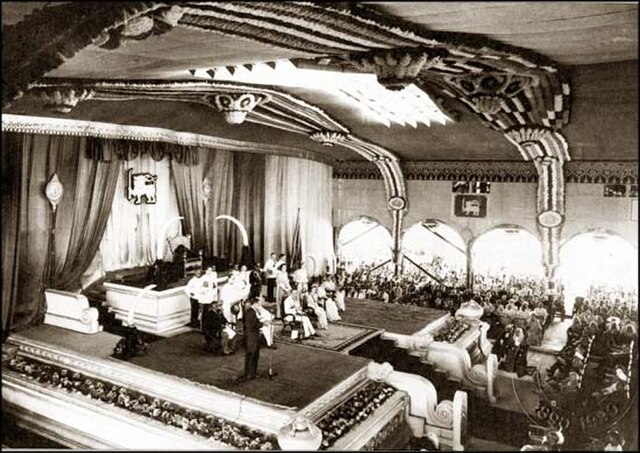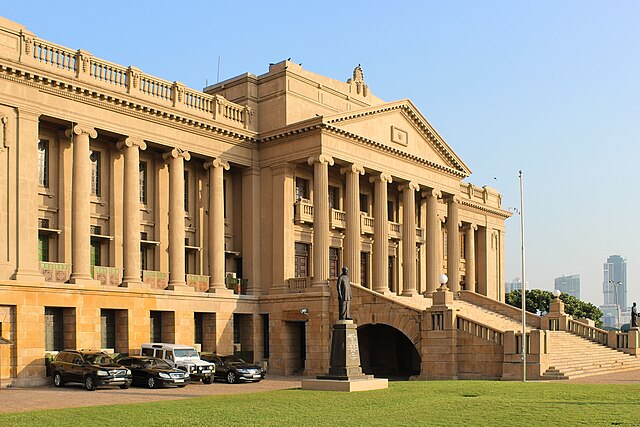Speaker of the Parliament of Sri Lanka
The Speaker of the Parliament of the Democratic Socialist Republic of Sri Lanka is the presiding officer of the chamber. The current Speaker of the Parliament is Mahinda Yapa Abeywardena, in office since 20 August 2020. The Speaker fulfills a number of important functions in relation to the operation of the House, which is based upon the British Westminster parliamentary system.
Speaker of the Parliament of Sri Lanka
The Speaker's official residence in Kotte
Chamal Rajapaksa, in the Speaker's ceremonial robes, mourning rosette and full bottomed wig
Image: Edward Lionel Senanayaka in 1957
The Parliament of the Democratic Socialist Republic of Sri Lanka is the supreme legislative body of Sri Lanka. It alone possesses legislative supremacy and thereby ultimate power over all other political bodies in the island. It is modeled after the British Parliament.
The 1947 opening of the first parliament at Independence Square by Prince Henry, Duke of Gloucester in the presence of D.S. Senanayake, the first Prime Minister of Ceylon.
The Old Parliament Building near the Galle Face Green, now the Presidential Secretariat
The old Legislative Council Building, Colombo Fort. Today houses the Ministry of Foreign Affairs.







